Mary Anne Yarde's Blog: The Coffee Pot Book Club , page 144
April 10, 2019
#HistoricalFantasy author, Luciana Cavallaro, is talking about what inspired her to write her fabulous book — The Labyrinthine Journey #TimeTravel @ClucianaLuciana
What inspired me to write The Labyrinthine JourneyBy Luciana Cavallaro
Thank you, Mary Anne, for inviting me to your blog and for allowing me to park myself here, while I appropriate your audience’s attention for a few minutes or so. I must admit, it has been a little difficult organising my thoughts for this article, I’ve been distracted by my ‘other full-time job’, which I am trying to avoid from being all consuming. Enough self-pity, let’s move onto more important business… my inspirations.My Servant of the Gods series was inspired by the myth of Atlantis. I had read Charles Berlitz book Atlantis—the lost continent revealed when I was 15, some decades ago now. For a 15-year-old, who grew up in country Western Australia, it was a mind-blowing experience, to learn about the various technologies and sophistication of a race of people who predated the engineering prowess and excellence of the ancient Greek and Romans, and that of the Persians. It whetted my appetite to learn more about these extraordinary people and it was my first foray into Greek mythology.

I didn’t know it then, that it would be the basis of my stories or that I would even write fiction. English was not my best subject at school, I was quite average, but I did love to read and enjoyed creative writing. I didn’t pursue writing until my sister and I went on a Contiki tour of Europe and visited the Colosseum. Walking through this amazing piece of engineering and through the Roman Forum woke my creative juices, and the motivation to write Historical Fantasy.I enrolled to study Ancient History via online, as I still had to work and earn an income. The units in the course provided me with the breadth and depth of content and knowledge of the ancient world. Though to this day, I am always studying and learning about our world’s history. It is astounding what continues to be uncovered by archaeologists and revealed by historians.It was during this course I was introduced to Herodotus—Father of History—who was dubbed by latter ancient historians, the Father of Lies, an unfair label in my opinion. He was the inspiration behind one of the short stories in Accursed Women—The Curse of Troy—and for a novella series I am currently working on. I refer to his Histories a lot, and enjoy his colourful interpretation of the various places he visited.

Homer’s Iliad and The Odyssey, also inspired my writing, though I had read Homer’s epic poems long before I began my Ancient History course. The sections where the narrative of the gods and their interplay between each other and interference with the humans, pivotal to Homer’s story, were a key factor when I was outlining the plot for my series. I wanted to capture their essence and involvement in the plight of the humankind, both good and unscrupulous actions, for this was what I fell in love with, their mythologies, and their humanistic foibles. They were relatable in their behaviour, yet untouchable for their immortality and unique abilities.
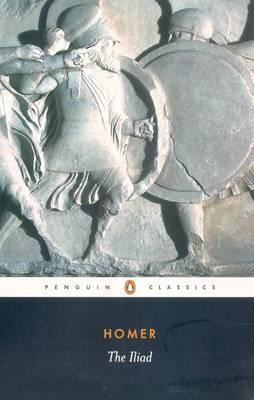
What I hope to do in my writing, is provide readers with stories that are informative, fun and action-packed. An added bonus for me, is if I can reveal a world that has been lost to us, by delivering a vicarious experience for the reader.Thank you for reading.
The Labyrinthine Journey

Can our heroes find the elusive talisman to continue their quest?Follow Evan as he continues his odyssey as Servant of the Gods in The Labyrinthine Journey. The quest to locate the sacred object adds pressure to the uneasy alliance between Evan and the Atlanteans. His inability to accept the world he’s in, and his constant battle with Zeus, both threaten to derail the expedition and his life.Traversing the mountainous terrain of the Peloponnese and Corinthian Gulf to the centre of the spiritual world, Evan meets with Pythia, Oracle of Delphi. Her cryptic prophecy reveals much more than he expected; something that changes his concept of the ancient world and his former way of life.Will Evan and his friends succeed in their quest to find the relics and stop the advent of Christianity?
The Coffee Pot Book Club Recommended Read.

Pick up your copy of The Labyrinthine JourneyAmazon• Smashwords
Luciana Cavallaro
 Historical fiction novelist and a secondary teacher, Luciana Cavallaro, likes to meander between contemporary life to the realms of mythology and history. Luciana has always been interested in Mythology and Ancient History but her passion wasn’t realised until seeing the Colosseum and the Roman Forum. From then on, she was inspired to write Historical Fantasy.She has spent many lessons promoting literature and the merits of ancient history. Today, you will still find Luciana in the classroom, teaching ancient history and promoting literature. To keep up-to-date with her ramblings, ahem, that is meaningful discourse, subscribe to her mailing list by clicking over to her website.Connect with Luciana: Twitter • Facebook• Goodreads• Linkedin.
Historical fiction novelist and a secondary teacher, Luciana Cavallaro, likes to meander between contemporary life to the realms of mythology and history. Luciana has always been interested in Mythology and Ancient History but her passion wasn’t realised until seeing the Colosseum and the Roman Forum. From then on, she was inspired to write Historical Fantasy.She has spent many lessons promoting literature and the merits of ancient history. Today, you will still find Luciana in the classroom, teaching ancient history and promoting literature. To keep up-to-date with her ramblings, ahem, that is meaningful discourse, subscribe to her mailing list by clicking over to her website.Connect with Luciana: Twitter • Facebook• Goodreads• Linkedin.
Published on April 10, 2019 23:00
Book Review – The Briton and the Dane (The Briton and the Dane #1) by Mary Ann Bernal #HistoricalFiction @BritonandDane
<!-- /* Font Definitions */ @font-face {font-family:"Cambria Math"; panose-1:2 4 5 3 5 4 6 3 2 4; mso-font-charset:0; mso-generic-font-family:roman; mso-font-pitch:variable; mso-font-signature:-536870145 1107305727 0 0 415 0;} @font-face {font-family:Calibri; panose-1:2 15 5 2 2 2 4 3 2 4; mso-font-charset:0; mso-generic-font-family:swiss; mso-font-pitch:variable; mso-font-signature:-536859905 -1073732485 9 0 511 0;} /* Style Definitions */ p.MsoNormal, li.MsoNormal, div.MsoNormal {mso-style-unhide:no; mso-style-qformat:yes; mso-style-parent:""; margin:0cm; margin-bottom:.0001pt; mso-pagination:widow-orphan; font-size:12.0pt; font-family:"Calibri",sans-serif; mso-ascii-font-family:Calibri; mso-ascii-theme-font:minor-latin; mso-fareast-font-family:Calibri; mso-fareast-theme-font:minor-latin; mso-hansi-font-family:Calibri; mso-hansi-theme-font:minor-latin; mso-bidi-font-family:"Times New Roman"; mso-bidi-theme-font:minor-bidi;} .MsoChpDefault {mso-style-type:export-only; mso-default-props:yes; font-family:"Calibri",sans-serif; mso-ascii-font-family:Calibri; mso-ascii-theme-font:minor-latin; mso-fareast-font-family:Calibri; mso-fareast-theme-font:minor-latin; mso-hansi-font-family:Calibri; mso-hansi-theme-font:minor-latin; mso-bidi-font-family:"Times New Roman"; mso-bidi-theme-font:minor-bidi;} @page WordSection1 {size:612.0pt 792.0pt; margin:72.0pt 72.0pt 72.0pt 72.0pt; mso-header-margin:36.0pt; mso-footer-margin:36.0pt; mso-paper-source:0;} div.WordSection1 {page:WordSection1;} </style><br /><h3 class="post-title entry-title" itemprop="name" style="background-color: white; color: #333333; font-family: "IM Fell English"; font-size: 18px; font-stretch: normal; font-variant-east-asian: normal; font-variant-numeric: normal; font-weight: normal; line-height: normal; margin: 0px; position: relative;"><div class="separator" style="clear: both; color: #444444; font-family: Arial, Tahoma, Helvetica, FreeSans, sans-serif; font-size: 13px; text-align: center;"><a href="https://3.bp.blogspot.com/-hdR3nhme3A..." imageanchor="1" style="color: #002a77; font-size: 14.85px; margin-left: 1em; margin-right: 1em; text-decoration-line: none;"><img border="0" data-original-height="512" data-original-width="1024" height="320" src="https://3.bp.blogspot.com/-hdR3nhme3A..." style="background: transparent; border-radius: 0px; border: none; box-shadow: rgba(0, 0, 0, 0.2) 0px 0px 0px; padding: 8px; position: relative;" width="640" /></a></div><div class="separator" style="clear: both; color: #444444; font-family: Arial, Tahoma, Helvetica, FreeSans, sans-serif; font-size: 13px; text-align: center;"><br /></div><div align="center" class="MsoNormal" style="background-attachment: initial; background-clip: initial; background-image: initial; background-origin: initial; background-position: initial; background-repeat: initial; background-size: initial; font-family: Calibri, sans-serif; font-size: 12pt; margin: 0cm 0cm 0.0001pt; text-align: center;"><span style="font-family: "times new roman", serif; font-size: 35pt;"><span style="color: #bf9000;">The Briton and the Dane</span></span><br /><span style="color: #bf9000; font-family: "times new roman", serif; font-size: 28pt;">(The Briton and the Dane #1)</span><br /><span style="color: #bf9000; font-family: "times new roman", serif; font-size: 28pt;">By Mary Ann Bernal</span></div><div align="center" class="MsoNormal" style="font-family: Calibri, sans-serif; font-size: 12pt; margin: 0cm 0cm 0.0001pt; text-align: center;"><span style="background-attachment: initial; background-clip: initial; background-image: initial; background-origin: initial; background-position: initial; background-repeat: initial; background-size: initial; font-family: "times new roman", serif; font-size: 28pt;"><span style="color: #bf9000;"><br /></span></span></div><div class="separator" style="clear: both; font-family: Arial, Tahoma, Helvetica, FreeSans, sans-serif; font-size: 14.85px; text-align: center;"><a href="https://3.bp.blogspot.com/-VNlZSDXxIr..." imageanchor="1" style="color: #002a77; margin-left: 1em; margin-right: 1em; text-decoration-line: none;"><img border="0" data-original-height="475" data-original-width="315" height="640" src="https://3.bp.blogspot.com/-VNlZSDXxIr..." style="background: transparent; border-radius: 0px; border: none; box-shadow: rgba(0, 0, 0, 0.2) 0px 0px 0px; padding: 8px; position: relative;" width="424" /></a></div><div align="center" class="MsoNormal" style="font-family: Calibri, sans-serif; font-size: 12pt; margin: 0cm 0cm 0.0001pt; text-align: center;"><br /></div><div align="center" class="MsoNormal" style="font-family: Calibri, sans-serif; font-size: 12pt; margin: 0cm 0cm 0.0001pt; text-align: center;"><span style="background-attachment: initial; background-clip: initial; background-image: initial; background-origin: initial; background-position: initial; background-repeat: initial; background-size: initial; color: #181818; font-family: "times new roman", serif; font-size: 16pt;">King Alfred the Great has thwarted the Viking threat against his kingdom of Wessex. Signing a treaty with the formidable Danish King Guthrum, he succeeds in pushing the heathen army back to the rolling fens of East Anglia.</span><span style="color: #181818; font-family: "times new roman", serif; font-size: 16pt;"><br /><br /><span style="background-attachment: initial; background-clip: initial; background-image: initial; background-origin: initial; background-position: initial; background-repeat: initial; background-size: initial;">An uneasy peace holds sway: The King establishes a standing army under Lord Richard, who takes command of the citadel at Wareham.</span><br /><br /><span style="background-attachment: initial; background-clip: initial; background-image: initial; background-origin: initial; background-position: initial; background-repeat: initial; background-size: initial;">Richard and his army are accompanied by his daughter, Gwyneth, an impetuous and reckless young woman – at once striking, intellectually gifted, but dangerously vain and imprudent.</span><br /><br /><span style="background-attachment: initial; background-clip: initial; background-image: initial; background-origin: initial; background-position: initial; background-repeat: initial; background-size: initial;">While Richard broods on the Viking threat, Gwyneth falls in love with an enemy prince - only to discover that she has been betrothed to a Saxon warrior twice her age. </span><br /><br /><span style="background-attachment: initial; background-clip: initial; background-image: initial; background-origin: initial; background-position: initial; background-repeat: initial; background-size: initial;">Refusing to countenance her grim fate, she flees the fortress, but is soon kidnapped by a Viking warrior and taken to the camp of King Guthrum while Saxon search parties scour the land. </span><br /><br /><span style="background-attachment: initial; background-clip: initial; background-image: initial; background-origin: initial; background-position: initial; background-repeat: initial; background-size: initial;">In captivity, a hostage to fortune, and the focus of political intrigue, Gwyneth is submerged in a world of expediency, betrayal and black treachery. Slowly, she realizes the truth is suspect, nothing is what it appears and her reality cannot be trusted. </span><br /><br /><span style="background-attachment: initial; background-clip: initial; background-image: initial; background-origin: initial; background-position: initial; background-repeat: initial; background-size: initial;">And all the time, against this background, she desires nothing more than to be reunited with her dashing Danish prince.</span></span><span style="font-family: "times new roman", serif; font-size: 16pt;"><o:p></o:p></span></div><br style="font-family: Arial, Tahoma, Helvetica, FreeSans, sans-serif; font-size: 14.85px;" /><br style="font-family: Arial, Tahoma, Helvetica, FreeSans, sans-serif; font-size: 14.85px;" /><br style="color: #444444; font-family: Arial, Tahoma, Helvetica, FreeSans, sans-serif; font-size: 13px;" /><div align="center" class="MsoNormal" style="font-family: Calibri, sans-serif; font-size: 12pt; margin: 0cm 0cm 0.0001pt; text-align: center;"><br class="Apple-interchange-newline" /></div><div align="center" class="MsoNormal" style="font-family: Calibri, sans-serif; font-size: 12pt; margin: 0cm 0cm 0.0001pt; text-align: center;"><img border="0" data-original-height="789" data-original-width="940" height="335" src="https://3.bp.blogspot.com/-mF8ZcV6oU2..." style="background: transparent; border-radius: 0px; border: none; box-shadow: rgba(0, 0, 0, 0.2) 0px 0px 0px; color: #0563c1; font-family: arial, tahoma, helvetica, freesans, sans-serif; font-size: 14.85px; padding: 8px; position: relative;" width="400" /></div><div align="center" class="MsoNormal" style="font-family: Calibri, sans-serif; font-size: 12pt; margin: 0cm 0cm 0.0001pt; text-align: center;"><b><span style="font-family: garamond, serif; font-size: 16pt;"><br /></span></b></div><div align="center" class="MsoNormal" style="font-family: Calibri, sans-serif; font-size: 12pt; margin: 0cm 0cm 0.0001pt; text-align: center;"><b><span style="font-family: garamond, serif; font-size: 16pt;">“Do you not see the men and women who seek the protection and safety of these walls? Do you not see their fear? Does this not prove that the Norsemen are raiding again?”</span></b></div><br style="font-family: Arial, Tahoma, Helvetica, FreeSans, sans-serif; font-size: 14.85px;" /><span style="font-family: garamond, serif; font-size: 16pt;">It was only a matter of time before the Norseman once again began to raid the rich and fertile land of Britannia. However, such things, were of no concern to Gwyneth of Wareham as she listened to the sea crash upon the shore. However, that fateful night, which hinted not at the events that were to unfold, would change the course of her life forever.<o:p></o:p></span><br style="font-family: Arial, Tahoma, Helvetica, FreeSans, sans-serif; font-size: 14.85px;" /><br style="font-family: Arial, Tahoma, Helvetica, FreeSans, sans-serif; font-size: 14.85px;" /><span style="font-family: garamond, serif; font-size: 16pt;">When Gwyneth saw a shadowy figure stumbling towards the surf, she felt compelled to follow him — instantly dismissing any danger she might have found herself in. When this mystery man collapses in front of her, Gwyneth feels compelled to help. It was only then that Gwyneth saw the arrow sticking out of his shoulder.<o:p></o:p></span><br style="font-family: Arial, Tahoma, Helvetica, FreeSans, sans-serif; font-size: 14.85px;" /><br style="font-family: Arial, Tahoma, Helvetica, FreeSans, sans-serif; font-size: 14.85px;" /><span style="font-family: garamond, serif; font-size: 16pt;">Who was this stranger? What had he done? What did he intend to do? As Gwyneth nursed the warrior back to health, there was only one thing that she knew for sure — she could fall in love with a man like this.<o:p></o:p></span><br style="font-family: Arial, Tahoma, Helvetica, FreeSans, sans-serif; font-size: 14.85px;" /><br style="font-family: Arial, Tahoma, Helvetica, FreeSans, sans-serif; font-size: 14.85px;" /><span style="font-family: garamond, serif; font-size: 16pt;">Alas, this was a man’s world, and Gwyneth was her father’s daughter. She must marry where he tells her, even if her heart does belong to someone else.<o:p></o:p></span><br style="font-family: Arial, Tahoma, Helvetica, FreeSans, sans-serif; font-size: 14.85px;" /><br style="font-family: Arial, Tahoma, Helvetica, FreeSans, sans-serif; font-size: 14.85px;" /><span style="font-family: garamond, serif; font-size: 16pt;">Erik of Esbjerg had not expected to fall for his would-be rescuer, but he did, and now he has to fight if he wants to keep her. It is that, or watch her marry a man that is not him.<o:p></o:p></span><br style="font-family: Arial, Tahoma, Helvetica, FreeSans, sans-serif; font-size: 14.85px;" /><br style="font-family: Arial, Tahoma, Helvetica, FreeSans, sans-serif; font-size: 14.85px;" /><span style="font-family: garamond, serif; font-size: 16pt;">With a sweeping elegance, I soon found myself utterly enchanted with The Briton and the Dane by Mary Ann Bernal. Gwyneth was a character that I immediately loved. She is young, feisty, and something of a free spirit. She cannot be tamed. Her wilfulness, often bordering on defiance made her a fascinating protagonist and one I enjoyed reading about, although I did feel sorry for the monks, whose patience Gwyneth put to the test on more than one occasion! Gwyneth’s story was also a lovely reminder of the joyful experience of first love.<o:p></o:p></span><br style="font-family: Arial, Tahoma, Helvetica, FreeSans, sans-serif; font-size: 14.85px;" /><br style="font-family: Arial, Tahoma, Helvetica, FreeSans, sans-serif; font-size: 14.85px;" /><span style="font-family: garamond, serif; font-size: 16pt;">The Briton and the Dane has a large cast of characters. There is not one but three romance stories within the cover of this book. Gwyneth’s brothers, the lovable David and the serious Stephen all have rather complicated love interests — David in particular! I thoroughly enjoyed learning about these supporting characters, and they helped to give the story depth. I especially enjoyed Stephen and Elizabeth’s story.<o:p></o:p></span><br style="font-family: Arial, Tahoma, Helvetica, FreeSans, sans-serif; font-size: 14.85px;" /><br style="font-family: Arial, Tahoma, Helvetica, FreeSans, sans-serif; font-size: 14.85px;" /><span style="font-family: garamond, serif; font-size: 16pt;">Bernal has a very engaging narrative and style, which held my attention throughout the course of this book. The political intrigue and the threat of war between King Guthrum and King Alfred (later to be known as The Great) gave this novel a sense of urgency. Peace was fragile, and war was on the horizon, add to that the complicated romance plot of our young intrepid protagonists, made The Briton and the Dane unputdownable.<o:p></o:p></span><br style="font-family: Arial, Tahoma, Helvetica, FreeSans, sans-serif; font-size: 14.85px;" /><br style="font-family: Arial, Tahoma, Helvetica, FreeSans, sans-serif; font-size: 14.85px;" /><span style="font-family: garamond, serif; font-size: 16pt;">I have read three books in The Briton and the Dane saga, and I have enjoyed them all. Bernal is a natural storyteller and writes fabulous escapism fiction.</span><span style="font-family: garamond, serif; font-size: 16pt;"><o:p></o:p></span><br style="font-family: Arial, Tahoma, Helvetica, FreeSans, sans-serif; font-size: 14.85px;" /><br style="font-family: Arial, Tahoma, Helvetica, FreeSans, sans-serif; font-size: 14.85px;" /><span style="font-family: garamond, serif; font-size: 16pt;">I Highly Recommend.<o:p></o:p></span><br style="font-family: Arial, Tahoma, Helvetica, FreeSans, sans-serif; font-size: 14.85px;" /><br style="font-family: Arial, Tahoma, Helvetica, FreeSans, sans-serif; font-size: 14.85px;" /><span style="font-family: garamond, serif; font-size: 16pt;">Review by Mary Anne Yarde.</span><br style="font-family: Arial, Tahoma, Helvetica, FreeSans, sans-serif; font-size: 14.85px;" /><span style="font-family: garamond, serif; font-size: 16pt;">The Coffee Pot Book Club.</span><br style="font-family: Arial, Tahoma, Helvetica, FreeSans, sans-serif; font-size: 14.85px;" /><span style="font-family: garamond, serif; font-size: 16pt;"><br /></span><span style="font-family: Arial, Tahoma, Helvetica, FreeSans, sans-serif; font-size: 14.85px;"></span><br style="color: #444444; font-family: Arial, Tahoma, Helvetica, FreeSans, sans-serif; font-size: 13px;" /><div align="center" class="MsoNormal" style="font-family: Calibri, sans-serif; font-size: 12pt; margin: 0cm 0cm 0.0001pt; text-align: center;"><div><span style="color: black; font-family: garamond, serif; font-size: 30pt;"><br /></span></div><span style="color: #bf9000; font-family: garamond, serif; font-size: 30pt;">Pick up your copy of</span><br /><i style="color: #bf9000; font-family: garamond, serif; font-size: 30pt;">The Briton and the Dane</i><br /><br /><a href="https://www.amazon.co.uk/Briton-Dane-..." style="color: #002a77; font-family: garamond, serif; font-size: 30pt; text-decoration-line: none;">Amazon UK </a><span style="font-family: garamond, serif; font-size: 30pt;">• </span><a href="https://www.amazon.com/Briton-Dane-Se..." style="color: #002a77; font-family: garamond, serif; font-size: 30pt; text-decoration-line: none;">Amazon US</a></div><div align="center" class="MsoNormal" style="font-family: Calibri, sans-serif; font-size: 12pt; margin: 0cm 0cm 0.0001pt; text-align: center;"><br /></div><div align="center" class="MsoNormal" style="font-family: Calibri, sans-serif; font-size: 12pt; margin: 0cm 0cm 0.0001pt; text-align: center;"><br /></div><span lang="EN-US" style="font-family: garamond, serif; font-size: 30pt;"><span style="color: #bf9000;"><br /></span></span><span style="font-family: Arial, Tahoma, Helvetica, FreeSans, sans-serif; font-size: 14.85px;"></span><span lang="EN-US" style="font-family: garamond, serif; font-size: 30pt;"><span style="color: #bf9000;">Mary Ann Bernal</span></span><br style="color: #444444; font-family: Arial, Tahoma, Helvetica, FreeSans, sans-serif; font-size: 13px;" /><div style="font-family: Arial, Tahoma, Helvetica, FreeSans, sans-serif; font-size: 14.85px;"><span lang="EN-US" style="font-family: garamond, serif; font-size: 30pt;"><br /></span></div><div class="separator" style="clear: both; font-family: Arial, Tahoma, Helvetica, FreeSans, sans-serif; font-size: 14.85px; text-align: center;"><a href="https://3.bp.blogspot.com/-iC9mnojWGJ..." imageanchor="1" style="clear: left; color: #002a77; float: left; margin-bottom: 1em; margin-right: 1em; text-decoration-line: none;"><img border="0" data-original-height="200" data-original-width="192" src="https://3.bp.blogspot.com/-iC9mnojWGJ..." style="background: transparent; border-radius: 0px; border: none; box-shadow: rgba(0, 0, 0, 0.2) 0px 0px 0px; padding: 8px; position: relative;" /></a></div><div style="font-family: Arial, Tahoma, Helvetica, FreeSans, sans-serif; font-size: 14.85px;"><span style="font-family: garamond, serif; font-size: 16pt;">Mary Ann Bernal attended Mercy College, Dobbs Ferry, NY, where she received a degree in Business Administration. Her literary aspirations were ultimately realized when the first book of The Briton and the Dane novels was published in 2009. In addition to writing historical fiction, Mary Ann has also authored a collection of contemporary short stories in the Scribbler Tales series. Her latest endeavor is a science fiction/fantasy novel entitled Planetary Wars Rise of an Empire. Originally hailing from New York, Mary Ann now resides in Elkhorn, Nebraska.</span></div><div style="font-family: Arial, Tahoma, Helvetica, FreeSans, sans-serif; font-size: 14.85px;"><span style="font-family: garamond, serif; font-size: 16pt;"><br /></span></div><span style="font-family: garamond, serif; font-size: 16pt;"></span><br style="font-family: Arial, Tahoma, Helvetica, FreeSans, sans-serif; font-size: 14.85px;" /><div style="font-family: Arial, Tahoma, Helvetica, FreeSans, sans-serif; font-size: 14.85px;"><span style="color: black; font-family: garamond, serif; font-size: 16pt;"><span style="font-size: 16pt;">Connect with Mary Ann: <a href="http://maryannbernal.com/" style="color: #002a77; text-decoration-line: none;">Website</a></span><span lang="EN-US" style="font-size: 16pt;"> •</span><span style="font-size: 16pt;"> <a href="http://whisperinglegendspress.com/" style="color: #002a77; text-decoration-line: none;">Whispering Legends Press</a> • <a href="https://twitter.com/BritonandDane" style="color: #002a77; text-decoration-line: none;">Twitter.</a></span></span></div></h3>
Published on April 10, 2019 22:00
April 9, 2019
Historian and author, Trisha Hughes is taking a look at the controversy surrounding Queen Victoria’s grandson and heir — Prince Eddy #History #conspiracy @TrishaHughes_
As the terrible news of Eddy’s death was being published in every newspaper in the country, Stephen was reportedly starving himself to death in the asylum. By 3rdFebruary, he was dead as well.

Obviously, we can never know what sort of monarch Eddy might have been. Yet his own father, who came to the throne in 1901 with the lowest of expectations, turned out to be the highly successful King Edward VII. Might not Eddy, far from being a ‘waste of space’, have repeated that pattern? In an age when the personalities of monarchs mattered more than they do now, who’s to say what emollient effect his decent, good-hearted character might have had on the international stage in the tense years leading up to the Great War? It’s certainly hard to imagine that he would ever have turned his back on the plight of the Romanovs, as his brother King George V arguably did. And Alexandra, the girl Eddy had once yearned to marry, might well have died an old lady in the peaceful safety of some English country house instead of a pool of blood in a dank cellar in Ekaterinberg.
Like all ‘lost’ princes, Eddy is one of the fascinating ‘what ifs’ of history. But instead of the tired old trope of ‘what a blessing’ that he never lived to sit upon the British throne, perhaps history should rather be saying ‘what a shame’.
Victoria to VikingsThe Circle of Blood

Due for release on 28th May 2019.
Vikings to Virgin:The Hazards of Being King

In Vikings to Virgin - The Hazards of Being King Trisha Hughes provides the reader with a pacey introduction to the many pitfalls faced by the ambitious as they climbed the dangerous ladders of royalty. It is easy to think that monarchs are all powerful, but throughout the Dark and Middle Ages it was surprisingly easy to unseat one and assume the crown yourself. But if it was easy to gain ... it was just as easy to lose.From the dawn of the Vikings through to Elizabeth I, Trisha Hughes follows the violent struggles for power and the many brutal methods employed to wrest it and keep hold of it. Murder, deceit, treachery, lust and betrayal were just a few of the methods used to try and win the crown. Vikings to Virgin - The Hazards of Being King spans fifteen hundred years and is a highly accessible and enjoyable ride through the dark side of early British monarchy.
Amazon UK • Amazon US
Virgin to Victoria
 Virgin to Victoria is a powerful retelling of the history of the British monarchy, beginning with Henry VIII's daughter, Elizabeth I, as she comes to the throne. Charting Elizabeth's incredible journey, Virgin to Victoria travels in time through the confusion of the Stuart dynasty, the devastation of a Civil War led by Oliver Cromwell, horrific battles for the throne and the turbulent Hanover dynasty with its intricate family squabbles. Despite her amazing legacy, Elizabeth failed England in one vital area. She never married, nor did she leave an heir to the Tudor family. In making this one fateful decision, the Virgin Queen left the path open for a take-over and life would never be the same. Victoria did not ask to be Queen. It was thrust upon her by a series of events that removed all others who stood in line for the throne. She assumed it reluctantly and, at first, incompetently. Parliament was sure that the 18-year-old could be relied upon to leave the job of running the country to the professionals. Couldn't she?
Virgin to Victoria is a powerful retelling of the history of the British monarchy, beginning with Henry VIII's daughter, Elizabeth I, as she comes to the throne. Charting Elizabeth's incredible journey, Virgin to Victoria travels in time through the confusion of the Stuart dynasty, the devastation of a Civil War led by Oliver Cromwell, horrific battles for the throne and the turbulent Hanover dynasty with its intricate family squabbles. Despite her amazing legacy, Elizabeth failed England in one vital area. She never married, nor did she leave an heir to the Tudor family. In making this one fateful decision, the Virgin Queen left the path open for a take-over and life would never be the same. Victoria did not ask to be Queen. It was thrust upon her by a series of events that removed all others who stood in line for the throne. She assumed it reluctantly and, at first, incompetently. Parliament was sure that the 18-year-old could be relied upon to leave the job of running the country to the professionals. Couldn't she?Amazon UK • Amazon US
Trisha Hughes
 I was born in a little outback town called Blackall in Central Queensland, Australia. From there my parents moved to the Brisbane suburb of Fortitude Valley where I grew up to be a tiny, self-reliant little girl.
I was born in a little outback town called Blackall in Central Queensland, Australia. From there my parents moved to the Brisbane suburb of Fortitude Valley where I grew up to be a tiny, self-reliant little girl.My first book, ‘Daughters of Nazareth’ is my story, written eighteen years ago, fuelled on by the discovery of a family I never knew I had. It’s full of family secrets, tremendous heartache but proves the human spirit’s amazing ability to triumph over adversity. Nineteen years ago, after just one phone call, my life changed abruptly. With that change came a passion for writing and I have been writing ever since.
I love writing crime novels but my passion is with the history of the British Monarchy. The first in my ‘V2V’ trilogy is ‘Vikings to Virgin – The Hazards of being King ’ published in 2017. The second in the series is due for release on 28th April this year and is called ‘Virgin to Victoria – The Queen is Dead. Long live the Queen.’ The final book, ‘Victoria to Vikings – The Circle of Blood’ will be released early 2019.
Trisha loves to hear from readers, you can find her: Website • Twitter • Facebook
<!-- /* Font Definitions */ @font-face {font-family:"Cambria Math"; panose-1:2 4 5 3 5 4 6 3 2 4; mso-font-charset:0; mso-generic-font-family:roman; mso-font-pitch:variable; mso-font-signature:-536870145 1107305727 0 0 415 0;} @font-face {font-family:Calibri; panose-1:2 15 5 2 2 2 4 3 2 4; mso-font-charset:0; mso-generic-font-family:swiss; mso-font-pitch:variable; mso-font-signature:-536859905 -1073732485 9 0 511 0;} @font-face {font-family:Times; panose-1:0 0 5 0 0 0 0 2 0 0; mso-font-charset:0; mso-generic-font-family:auto; mso-font-pitch:variable; mso-font-signature:-536870145 1342185562 0 0 415 0;} /* Style Definitions */ p.MsoNormal, li.MsoNormal, div.MsoNormal {mso-style-unhide:no; mso-style-qformat:yes; mso-style-parent:""; margin:0cm; margin-bottom:.0001pt; mso-pagination:widow-orphan; font-size:12.0pt; font-family:"Calibri",sans-serif; mso-ascii-font-family:Calibri; mso-ascii-theme-font:minor-latin; mso-fareast-font-family:Calibri; mso-fareast-theme-font:minor-latin; mso-hansi-font-family:Calibri; mso-hansi-theme-font:minor-latin; mso-bidi-font-family:"Times New Roman"; mso-bidi-theme-font:minor-bidi;} .MsoChpDefault {mso-style-type:export-only; mso-default-props:yes; font-family:"Calibri",sans-serif; mso-ascii-font-family:Calibri; mso-ascii-theme-font:minor-latin; mso-fareast-font-family:Calibri; mso-fareast-theme-font:minor-latin; mso-hansi-font-family:Calibri; mso-hansi-theme-font:minor-latin; mso-bidi-font-family:"Times New Roman"; mso-bidi-theme-font:minor-bidi;} @page WordSection1 {size:612.0pt 792.0pt; margin:72.0pt 72.0pt 72.0pt 72.0pt; mso-header-margin:36.0pt; mso-footer-margin:36.0pt; mso-paper-source:0;} div.WordSection1 {page:WordSection1;} </style> -->
Published on April 09, 2019 23:00
April 8, 2019
Check out #HistoricalFiction author, Kris Waldherr, fabulous new book — The Lost History of Dreams #HFVBTBlogTours @HFVBT
Historical Fiction Virtual Blog Tours Presents…

The Lost History of DreamsBy Kris Waldherr

A post-mortem photographer unearths dark secrets of the past that may hold the key to his future, in this captivating debut novel in the gothic tradition of Wuthering Heights and The Thirteenth Tale .
All love stories are ghost stories in disguise.When famed Byronesque poet Hugh de Bonne is discovered dead of a heart attack in his bath one morning, his cousin Robert Highstead, a historian turned post-mortem photographer, is charged with a simple task: transport Hugh’s remains for burial in a chapel. This chapel, a stained glass folly set on the moors of Shropshire, was built by de Bonne sixteen years earlier to house the remains of his beloved wife and muse, Ada. Since then, the chapel has been locked and abandoned, a pilgrimage site for the rabid fans of de Bonne’s last book, The Lost History of Dreams.However, Ada’s grief-stricken niece refuses to open the glass chapel for Robert unless he agrees to her bargain: before he can lay Hugh to rest, Robert must record Isabelle’s story of Ada and Hugh’s ill-fated marriage over the course of five nights.As the mystery of Ada and Hugh’s relationship unfolds, so does the secret behind Robert’s own marriage—including that of his fragile wife, Sida, who has not been the same since the tragic accident three years ago, and the origins of his own morbid profession that has him seeing things he shouldn’t—things from beyond the grave.Kris Waldherr effortlessly spins a sweeping and atmospheric gothic mystery about love and loss that blurs the line between the past and the present, truth and fiction, and ultimately, life and death.Praise for The Lost History of Dreams
“Scheherazade-like … haunting… Waldherr writes that ‘love stories are ghost stories in disguise.’ This one, happily, succeeds as both.” Kirkus Reviews (starred review)“An unexpected delight that grows steadily more compelling as its pages fly by.” Booklist“A sensual, twisting gothic tale that embraces Victorian superstition much in the tradition of A.S. Byatt’s Possession, Diane Setterfield’s The Thirteenth Tale and Emily Brontë’s Wuthering Heights.”BookPage
AMAZON • BARNES AND NOBLE • BOOKS-A-MILLION • INDIEBOUND
Kris Waldherr
 Kris Waldherr is an award-winning author, illustrator, and designer. She is a member of the Historical Novel Society, and her fiction has been awarded with fellowships by the Virginia Center of the Creative Arts and a reading grant by Poets & Writers.Kris Waldherr works and lives in Brooklyn in a Victorian-era house with her husband, the anthropologist-curator Thomas Ross Miller, and their young daughter.WEBSITE • FACEBOOK • TWITTER | GOODREADS • BOOKBUB
Kris Waldherr is an award-winning author, illustrator, and designer. She is a member of the Historical Novel Society, and her fiction has been awarded with fellowships by the Virginia Center of the Creative Arts and a reading grant by Poets & Writers.Kris Waldherr works and lives in Brooklyn in a Victorian-era house with her husband, the anthropologist-curator Thomas Ross Miller, and their young daughter.WEBSITE • FACEBOOK • TWITTER | GOODREADS • BOOKBUB
Published on April 08, 2019 23:30
Join #Historical Fiction author, Dominic Fielder, as he takes a look at the Death of a Battalion #Military #History @Kings_Germans
Death of a BattalionBy Dominic Fielder
“When sorrows come, they come not single spies. But in battalions!”William Shakespeare, Hamlet.
There was no sorrow when I first saw the ledger; opening it in the National Archive at Kew felt reverential. I had dreamt of such a document but now here it was. A time capsule of the dates when Major Gunn, a British commissary officer had signed Hanoverian and Hessian troops into the service of George III. I look at the images I have of those documents now and still find a new detail in them. They remind me of both the joy and necessity of research and how I need to find the time to return to Kew and study these documents afresh.

The research trip to Kew had been in search of a story and by chance I ended up ‘discovering’ the King’s Germans in the footnote of the ledger above.In the latter part of 1794, with the tide of war turned hard against the Allies, two Hanoverian infantry divisions had surrendered in the town of Nieuport, the life-line and shortest supply route of the Duke’s army back to Great Britain. The war in Flanders was over in all but name. Although the ravages of the last few months leading to the final winter campaign yielded no large set-piece battles, the damage inflicted upon those soldiers who fought in a series of small and largely forgotten rear-guard skirmishes was great. There were a series of rosters dated between 1793 and 1795. Gunn had travelled throughout German principalities as the British government carried out a series of negotiations to purchase allied troops, particularly infantry, to make good their own shortages and fulfil promises of deployment quotas to Austria. Ultimately, there were never enough men, and by late 1794, the troops that filed wearily into their winter cantonments on the western banks of the Rhine, outside of Arnhem, were a shadow of the force that had marched towards France twenty months earlier.

At the time, Nieuport was a location that held little significance and there were two regiments to choose from, the 5th and the 10th. I may have tossed a coin; I can’t remember now. Either way, I ended up with the 10th and decided on the 2nd battalion. The plan was to tell their story, as truthfully as was interesting, within the bounds of fiction. And when the battalion died, there would be no sorrow. I would be free to tell the final tale of a confused retreat and my characters could be deployed as I saw fit. That was the plan.Except that history has a way of wanting to interfere and the more that one researches, the more a writer feels duty-bound to tell it. Nieuport had been a perennial source of worry to the British. The French had threatened it in September 1793 shortly after the British debacle at Dunkirk. Furnes had fallen as part of a clever lightning offensive in the spring of 1794 but Nieuport had held out, manned by a garrison of Hanoverian, Hessian and émigré French troops. Only when cut off and surrounded, by July 1794, did the defenders finally submit. Von Hammerstein, the Hanoverian commander, was offered a stark choice. The redcoats could march into exile with the honours of war but the émigré troops would be shown no mercy. Everyone of them was put to the sword as traitors of the revolution. Third brigade, to which the 5th and 10th belonged, would never see those winter cantonments that bordered German soil. The challenge now though, on the cusp of writing a third book in a series of four that will tell this part of the war, is that 2nd battalion is no longer faceless. I’ve come to love the characters, even the ones that I created for readers to loathe. Throughout the next book, The Queen of the Citadels, they will be plunged into the forlorn struggle for Nieuport. Not all will make it, though each will fight tooth and nail as I type out the words that condemn them, no doubt. Those who do, will become the flotsam of an army, so badly scarred by its efforts in the low countries that six months after it crossed the Rhine, the ledger shows 433 men on sick parade and 1056 still hospitalised from the force of 15,000 that had left Hanover in March 1793.

When 2nd Battalion was no more than an appendage to a page, I had no qualms about their destruction. But now Sebastian Krombach, Lieutenant Erich von Bomm, Captain Werner Brandt, Colonel Jacob Neuberg at al are real to me and a small but loyal band of readers. In truth, some of that decision can be put off until book, An Imperial Betrayal (nobody knows it’s called that yet!). When the moment comes to wield the knife, my sorrows will not be single spies, but legion for the death of the 10th and my fine battalion.
The King of DunkirkThe King’s Germans Book #2

May 1793: The French border.
Valenciennes, Paris then home! Every common soldier knows the popular refrain so why can’t the commanders see sense?
The protracted siege of Valenciennes exposes the mistrust between the allies. National interests triumph over military logic. The King’s Germans find themselves marching north to the coast, not east to Paris. Dunkirk has become a royal prize, an open secret smuggled to the French, who set a trap for the Duke of York’s army.
Lieutenant Erich von Bomm and Captain Werner Brandt find themselves in the thick of the action as the 14th Nationals, the Black Lions, seek their revenge. In the chaos of battle, Sebastian Krombach, working alongside Major Trevethan, the engineer tasked with capturing Dunkirk, must make a dreadful choice: to guide a battalion of Foot Guards to safety across the Great Moor or carry a message that might save the life of a friend.
The King’s Germans and the Black Lions do battle to determine who shall be crowned the King of Dunkirk.
Except
St Amand: 7th May 1793The warm air was rich with the sights and sounds of insects carrying out their frantic activities in the calm of a late spring evening. What traffic there was on the road that wound through the Flanders countryside close to the French border were mostly wagons, private traders or those hired by the Commissary General. An army that was well fed, paid and had snatched victory from a certain defeat, eased the path to selling what little surplus the locals could spare. The man who had played a large part in that victory, according to the opinion of others, could share little of the celebratory mood that had blossomed after Rumes.Von Bomm had absented himself from an invitation to the Duke of York’s table, to face the accusations of Baumann, his captain in 1st Grenadiers. Charged with disobeying a direct order in combat, Baumann had demanded the satisfaction of a court martial. The horse trotted an easy gait towards the 1st Grenadiers’ camp and von Bomm felt the sap within him rise. He had bested a Baumann before, he would do so again. A rugged, youthful complexion, powerful physique and blonde hair swept rakishly forward under his Korsisch hat, the young bachelor’s easy manner made von Bomm the focus of attention for the eligible ladies of Hanover. He had fought three duels in his life. At eighteen he fought for the honour of an older woman who he thought he loved, three years later he fought to avoid a scandal when a woman had become besotted with him and alleged scandalous behaviour. That incident had been a clarion call for the handsome bachelor to amend his ways or at least try. There had been minor indiscretions along the way but for the last four years Erich von Bomm had led a more considered life. Then there was the matter of Sophia; a simple misunderstanding.He had found the daughter of a well-respected judge on the side of the road; her carriage having broken down. Offering the shelter of his buggy, he had ferried the poor girl home but when Sophia had left his care and retired to the safety of her father’s house, von Bomm had found a bag containing her dancing shoes. A sixth sense had made him open the bag and he found an unsigned note detailing an elopement. To return the bag to the front door risked the lovers’ secret plans being discovered; this did not sit well with von Bomm’s more romantic notions. In the height of the storm, he had attempted to scale a trellis framework to a window where a candlelight had recently been lit, only to be discovered in the act of ascending by a family servant. The matter could have been explained away but no-one seemed to be prepared to listen. Sophia’s betrothed, Ludwig Baumann, had challenged von Bomm. The choice was stark. Either resign his commission and accept full responsibility as being the author of the note or face a duel to give Baumann, a seemingly boorish and snide Guards officer, satisfaction. In the matter of the duel Erich von Bomm had not even fired a shot, outwitting his opponent by positioning him into a strong headwind. The glare of reflected morning sunlight and the fierce wind whipping into Baumann’s face had made any attempt at an accurate shot tricky. The rider flinched a little in the saddle with the memory of the shot fizzing past him and slapping into the bark of a nearby tree. Then von Bomm had slowly raised his pistol in an exaggerated action, a cool calculated response; before the shot could be fired, Baumann had dropped his discharged weapon to the floor and pleaded for clemency.Then there had been the meeting with Colonel Franke, two days after Rumes, when von Bomm had been allowed to return to his duties, such as they were for an officer facing the prospect of a court martial. The 1st Grenadiers colonel had simply asked him two questions, outside of the small talk about his health. “Did you disobey a direct order from Captain Baumann in the face of the enemy?”“Yes, sir.” “Lieutenant, given time to reflect on the matter, as no doubt you have, do you consider the action of disobeying a senior officer was the correct course of action?”“I have given the matter a great deal of thought, sir. I have questioned my own decisions and my conscience is clear. Had we given up Apple and Broken Tail house and fallen back across the road, two dozen or more wounded men would have died or been captured and the farm house that Captain Baumann was garrisoning, overrun.Erich von Bomm paused, then his eyes met that of his colonel. “Yes sir, I firmly believe it was the correct course of action.”Colonel Franke had listened to the words, his face emotionless.“Thank you, Lieutenant. I will not show favouritism between my officers. You are innocent until proven otherwise. I wish you to act as an aide to the Duke until a date is set for your court martial or the matter can be resolved within the battalion. For myself, I hope it is the latter but…” Franke had paused, lost in thought, before standing and offering von Bomm his hand. “Thank you, Erich. I have communications to complete, return here in two hours to collect them.”In the fitful nights of sleep that had followed, von Bomm had revisited the chaos of Rumes, hearing the flames licking at the walls of the building, feeling the inescapable heat and choking smoke that had caused him to push away the heavy blanket he was wrapped in and gasp for air. Then he was stumbling through the garden of Apple house, white blossom drifting around him on towards the church whose cemetery grounds were filled with redcoat bodies, faces and names that he knew. The last, a young grenadier clutching the lifeless body of the puppy the men had christened Broken Tail. The pair looked as if they were enjoying the lazy slumber of an afternoon amongst the ancient headstones, but it was a sleep from which neither would wake and the moment that always shocked von Bomm awake. Adjusting the wide brim of his light infantry hat to shield against the glare of the evening sun, he nudged his horse into a trot. Four days had passed since the interview with Franke. The summons to camp had arrived mid-afternoon today. Whatever the outcome of the next hour Erich von Bomm was determined not to give in. He loved his life and career in the army. Redcoats had died but that was the lot of the soldier. He had played his part in delivering victory at Rumes and despite the dreams, could find no fault in his own actions. The fate of battle might rob him of everything he held dear in the blink of an eye, but he would be damned if Captain Leopold Baumann was to be given such powers over him.
 Pick up your copy of
Pick up your copy of The King's Germans
Amazon UK • Amazon US
Dominic Fielder
 The King’s Germans is a project that has been many years in the making. Currently I manage to juggle writing and research around a crowded work and family life. The Black Lions of Flanders (set in 1793) is the first in the King’s Germans’ series, which will follow an array of characters through to the final book in Waterloo. The King of Dunkirk will soon be released and I hope that the response to that is as encouraging as the reviews of Black Lions have been.
The King’s Germans is a project that has been many years in the making. Currently I manage to juggle writing and research around a crowded work and family life. The Black Lions of Flanders (set in 1793) is the first in the King’s Germans’ series, which will follow an array of characters through to the final book in Waterloo. The King of Dunkirk will soon be released and I hope that the response to that is as encouraging as the reviews of Black Lions have been.While I’m self-published now, I have an excellent support team that help me to produce what I hope is a story with professional feel, and that readers would want to read more than once. My family back-ground is in paperback book sales, so I’m very keen to ensure that the paperback design is something that I would be proud to put on my bookshelf.
I live in just outside of Tavistock, in Devon where I enjoy walking on the moors and the occasional horse-riding excursion as both inspiration and relaxation.Connect with Dominic: Facebook • Twitter • Instagram • GoodreadsSocial Media
Published on April 08, 2019 23:00
April 7, 2019
#HistoricalFiction author, Merryn Allingham, is taking a look at what life was like in an Ottoman imperial harem #History @MerrynWrites
Turkish DelightBy Merryn Allingham
In A Tale of Two Sisters I set out to send my heroine, Alice Verinder, to Constantinople in search of her sister, though at the time I had only the vaguest notion of Turkish society in the early years of the twentieth century. What I discovered surprised me.

When you read of the Ottoman period in European literature, stereotypes abound. Turkish wives are seen as slaves and chattels, locked away behind harem doors, but the truth was far more nuanced. The legal status of Turkish women of the time was better, in fact, than that of European wives. The Turkish wife had absolute control of her property and the law allowed her to do what she wished with it – either on marriage or if she later inherited. And she could act independently of her husband: maybe sue in court or be sued herself, without regard to him.
Within their own homes, too, Turkish women had more power than was commonly thought and were treated with courtesy and respect. Outside the home, they were similarly respected. It was considered a sin to stare at women in public, for instance. And if a man behaved badly towards a woman, regardless of his position or religion, he would not escape punishment.
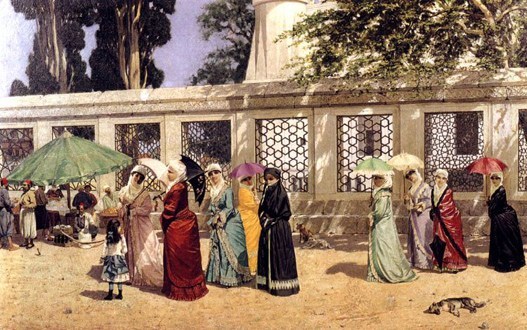 Women never went out alone, but were free from unwanted attention.
Women never went out alone, but were free from unwanted attention.When Alice travels to Topkapi Palace to find Lydia – her younger sister has been teaching two young girls from the imperial family – she is housed in the harem and, at first, is scandalised by the idea. Yet the harem was not just a space in which women were guarded, it was a place of retreat to be respected. Although a husband had the right to enter the apartments of his wives at all hours, he rarely availed himself of the privilege, since the women would resent such an intrusion. Instead, one room of the harem was kept for the master and it was here he would meet his chosen wife.
Female and male parts of the house were therefore clearly demarcated. Children mixed freely with adults and were included as a natural part of harem activities, with Ottoman women being devoted mothers. Victorian female visitors, accustomed to children being kept in totally separate quarters, often concluded that children in Ottoman families were overly indulged. Young boys remained with their mothers in the harem until they were seven, then would begin to participate in male company in the semalik, the male portion of the house. Girls remained in the harem until they married and took on the responsibility of running their own households – from childhood they were trained to be wives and mothers.
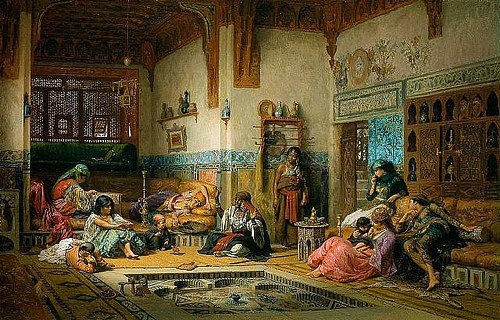 Leisure time in the harem.
Leisure time in the harem.Good manners were prized in this society and personal cleanliness, too, was seen as essential. Baths and hammams abounded and the harem itself was clean and orderly. Wooden floors were covered with carpets beaten daily, and the rest of the house scrubbed every week. No dirt, dust or footmark was allowed – every man and woman, regardless of rank, would take off their outdoor shoes for indoor slippers. The cleanliness and order of the imperial harem is one of the first things that strikes Alice.
 Bathing Ottoman style — the slave is attentive, read to assist.
Bathing Ottoman style — the slave is attentive, read to assist.The harem itself was a collection of spacious but sparsely furnished rooms. There was a large meeting room in the middle, with smaller rooms branching off – this was the anteroom where the women socialised, along with their female guests and female slaves. A gallery bordered the whole, with windows most often looking out onto the garden. Any windows that faced the street were covered with latticed shutters. In the homes of the wealthy, marble fountains were sometimes found in the anterooms.
Women spent virtually all their time within these rooms. If there was a garden, they would walk there regularly though always with a companion. If they went out publicly, it was with another woman or with one of their female slaves. Only elderly women could go alone! And so a natural modesty was assured. If a woman’s behaviour aroused the slightest suspicion she might be unchaste, she was despised and her husband and family humiliated. Even neighbours would feel their honour tarnished.
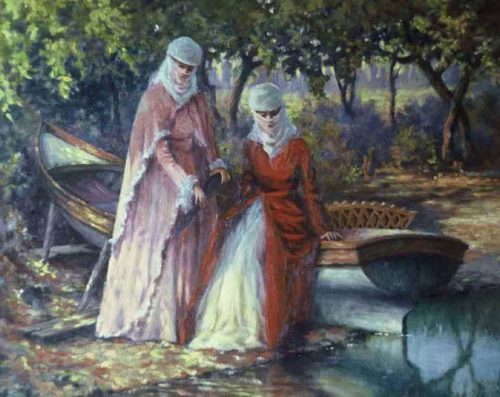 Ottoman women in the garden.
Ottoman women in the garden.The slave system in the Ottoman Empire was very different from that of plantation life in the US and the Caribbean. Males could be either military or domestic slaves and females almost always domestic. Within the gender segregation, there was a racial hierarchy at work, too. African women were cooks and given menial work, while white female slaves performed more specialised tasks like making and serving coffee or attending dinner trays or acting as nursemaids. Nineteenth century European women visitors reported that slave women had an astonishingly large amount of leisure time and freedom of speech and action inside the harem. They saw the slaves’ lives as preferable to those of domestic servants in the West.
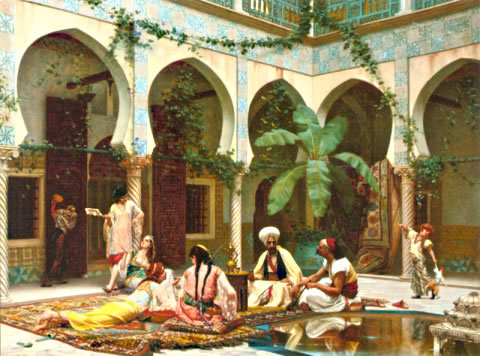 The harem itself was an institution governed by a strict hierarch, extensively and intricately layered.Also slavery was temporary. White women were obliged to serve as slaves for nine years but black women from Africa only seven, as they were thought less well-suited to a colder climate. When a woman was freed from slavery, she received a legally valid certificate of emancipation. She could ask to stay with her former master’s family for life and would be looked after, or she could request to be married. If she chose to marry, she was given a trousseau, jewellery, home furnishings and often a house of her own. The freed slave received a pension of life from his or her master and would keep strong ties with their former family. Many former slave women, particularly those trained in the harems of the elite, married men of high position.
The harem itself was an institution governed by a strict hierarch, extensively and intricately layered.Also slavery was temporary. White women were obliged to serve as slaves for nine years but black women from Africa only seven, as they were thought less well-suited to a colder climate. When a woman was freed from slavery, she received a legally valid certificate of emancipation. She could ask to stay with her former master’s family for life and would be looked after, or she could request to be married. If she chose to marry, she was given a trousseau, jewellery, home furnishings and often a house of her own. The freed slave received a pension of life from his or her master and would keep strong ties with their former family. Many former slave women, particularly those trained in the harems of the elite, married men of high position.As a result, it was possible to see slavery as a vehicle of upper mobility, a social ladder, rather than a badge of disdain. This is something that Lydia Verinder, a keen suffragette, finds almost impossible to understand. Many young girls from poor families volunteered to become slaves, or their families sold them into slavery, believing they would have a better future. Others might be captured during tribal raids and sold to slave dealers for profit.
In an imperial palace like Topkapi, most slave girls were not concubines – only those at the top of the palace training system, who excelled in intelligence, character and accomplishments as well as beauty, were eligible as concubine candidates. In addition to being a residence for the royal family, the imperial harem was a training institution – a kind of royal finishing school. The women destined to be concubines were often trained by the sultan’s mother herself. The Valide Sultan in A Tale of Two Sisters has complete control over every woman and every slave in the imperial harem.
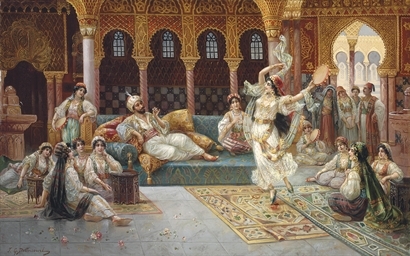 Dancing and music were some of the skills a concubine in the imperial harem would need. (A Harem by J.G. Delincourt).Other young slave girls were assigned to an experienced slave woman who trained them in elaborate Ottoman etiquette. The girls would be taught to speak and read Turkish and also taught the basic beliefs and practices of Islam. They learned to sew and embroider and, if they had musical talent, taught to play an instrument or to sing or dance. Both Alice and Lydia are, at different times, entranced by the skills of the women they live with.
Dancing and music were some of the skills a concubine in the imperial harem would need. (A Harem by J.G. Delincourt).Other young slave girls were assigned to an experienced slave woman who trained them in elaborate Ottoman etiquette. The girls would be taught to speak and read Turkish and also taught the basic beliefs and practices of Islam. They learned to sew and embroider and, if they had musical talent, taught to play an instrument or to sing or dance. Both Alice and Lydia are, at different times, entranced by the skills of the women they live with.My heroines soon have their preconceptions shattered. Yet they both find Topkapi a mysterious and often threatening place. Never more so than when Alice shows herself determined to uncover her sister’s fate and by doing so, faces danger at every turn.
A Tale of Two Sisters

Separated by time and distance, two sisters seek answers for all they’ve lost.
When Alice Verinder’s beloved sister Lydia goes missing, Alice boards the Orient Express bound for Topkapi Palace in Constantinople, determined to find her.
Lydia was governess to the Sultan’s young children and though her letters spoke of exotic delights and welcoming hosts, the reception Alice receives is decidedly cold and answers unforthcoming.
Now, as Alice digs deeper into the secrets of a land foreign to her she has only Englishman Harry Frome to help her. But as their search uncovers unforeseen dangers and exposes an unexpected passion, is Alice ready for the truths they’ll uncover?
Pick up your copy of A Tale of Two Sisters.
Amazon UK • Amazon US
Merryn Allingham
 Merryn Allingham was born into an army family and spent her childhood moving around the UK and abroad. Unsurprisingly it gave her itchy feet and in her twenties she escaped from an unloved secretarial career to work as cabin crew and see the world.Merryn still loves to travel and visit new places, especially those with an interesting history, but the arrival of marriage, children and cats meant a more settled life in the south of England, where she has lived ever since. It also gave her the opportunity to go back to 'school' and eventually teach at university.She has written seven historical novels, all mysteries with a helping of suspense and a dash of romance - sometimes set in exotic locations and often against a background of stirring world events. Her latest novel, A Tale of Two Sisters, is set in Constantinople at the turn of the 20th century when rebellion within the Ottoman Empire is growing ever louder. Against this background the novel traces the fate of two sisters, Alice and Lydia Verinder, and explores themes of family, love and loss.For the latest news of Merryn's writing, visit her website or join her on Facebook or Twitter.
Merryn Allingham was born into an army family and spent her childhood moving around the UK and abroad. Unsurprisingly it gave her itchy feet and in her twenties she escaped from an unloved secretarial career to work as cabin crew and see the world.Merryn still loves to travel and visit new places, especially those with an interesting history, but the arrival of marriage, children and cats meant a more settled life in the south of England, where she has lived ever since. It also gave her the opportunity to go back to 'school' and eventually teach at university.She has written seven historical novels, all mysteries with a helping of suspense and a dash of romance - sometimes set in exotic locations and often against a background of stirring world events. Her latest novel, A Tale of Two Sisters, is set in Constantinople at the turn of the 20th century when rebellion within the Ottoman Empire is growing ever louder. Against this background the novel traces the fate of two sisters, Alice and Lydia Verinder, and explores themes of family, love and loss.For the latest news of Merryn's writing, visit her website or join her on Facebook or Twitter.
Published on April 07, 2019 23:00
#BookReview — The Swan’s Road: The Atheling Chronicles Book #1 by Garth Pettersen #HistoricalFiction #AngloSaxon @garpet011

The Swan’s Road:The Atheling Chronicles Book #1By Garth Pettersen

In the eleventh century, Cnute, the Viking king of Engla-lond and Scandinavia, sails with his son, Harald, and his shield brothers to Rome. Thrown off course by a storm, they follow the route up the Rhine.
When Harald hangs back to assist Selia, a beautiful Frisian woman, his path turns perilous. Newfound enemies, retainers of Robert the Devil, Duke of Normandy, pursue them. Harald, Selia, and their companions fail to rendezvous with King Cnute, and are forced to travel cross-country on horseback. If Duke Robert's plan to assassinate Cnute succeeds, an invasion of Engla-lond will follow.
Can Harald and Selia reach Rome in time to warn the King?

“So tell me, how does a son of the illustrious King Cnute come to be in Friedland rescuing my niece from Norman abductors?
All roads lead to Rome, especially when your father, who so happens to be King Cnute, has made an alliance with Conrad, the Holy Roman Emperor. However, what was meant to be a long but worthwhile journey takes a sinister turn.
“Stay out of trouble,” that had been King Cnute’s warning to his son, Harold. Harold tried, he really did, but when he met the beautiful Selia, he feared there was more to her story than what the eyes saw. And he was right. Robert, Duke of Normandy, plans to make Selia his wife, whether she likes it or not. Taken by force, Selia is determined to escape the clutches of the vile Bertrand deZouche, Captain of Arms to the Duke of Normandy, before she is forced to wed Robert. Perhaps, this young Anglo-Dane would help her escape before it is too late.
From the dangers of a storm out at sea to the perilous streets of Rome, The Swan’s Road: The Atheling Chronicles Book #1 by Garth Pettersen is the enthralling story of Harold Harefoot as he battles to save his father from assassination and the woman he loves from marriage to a man she despised.
Having already read The Dane Law: The Atheling Chronicles Book #2 I was looking forward to going back and reading book #1 in the series. I was immediately transferred back to the world of Harold and his family. Filled with non-stop action and with a narrative that threatens to mesmerise, The Swan’s Road was impossible to put down — in fact, I read it in one sitting!
The historical detail of this book has to be commended. Pettersen writes with a keen eye for historical accuracies of the time this book is set in, although he does use a little poetic license to make his historical characters fall in line with the direction he wanted his story to go in. Pettersen certainly has a visceral understanding of what makes historical fiction worth reading. His descriptive prose brought this era back to life, and his ability to flesh his characters and make them breathe only demonstrates what a great writer he is.
As before, I adored the characterisation of Harold. He is a very noble yet humble man, who is honourable and above everything else, kind. It is no wonder that Selia falls in love with him. The love story between Harold and Selia is a slow simmering build, which gave this story a sense of depth and realism. The journey the two them go on is fraught with danger and adventure, which propelled the story forward and kept me turning those pages.
Pettersen’s masterful style pulls the reader into the story immediately. The Swan’s Road is told in the first and third person, which really worked for this book. I enjoyed reading about Cnute and The Duke of Normandy. Their perspectives gave this story its background and depth. Although I have to admit, it was Harold’s story, told in the first person which made this book an enchanting epic.
If you are looking for an absorbing, yet heartwarming historical fiction novel, then The Swan’s Road: The Atheling Chronicles Book #1 is the book for you.
I Highly Recommend.
Review by Mary Anne Yarde.The Coffee Pot Book Club.
Pick up your copy ofThe Swan’s Road:The Atheling Chronicles Book #1Amazon UK • Amazon US
Garth Pettersen
 Garth Pettersen is a Canadian writer living in the Fraser Valley near Vancouver, British Columbia, Canada. When he's not writing, he's riding horses and working with young, disabled riders.
Garth Pettersen is a Canadian writer living in the Fraser Valley near Vancouver, British Columbia, Canada. When he's not writing, he's riding horses and working with young, disabled riders.Garth's short stories have appeared in a number of anthologies, and in journals such as Blank Spaces, The Spadina Literary Review, and The Opening Line Literary 'Zine. His story River's Rising was awarded an Honourable Mention for the Short Story America 2017 Prize, and his fantasy novella, River Born, was one of two runners-up in the Wundor Editions (UK) Short Fiction Prize. His debut novel, The Swan's Road (Book #1 of the Atheling Chronicles) published by Tirgearr Publishing was released in 2017 and Book #2, The Dane Law, in September of 2018.
Connect with Garth: Website • Goodreads • Twitter.
Published on April 07, 2019 19:00
April 4, 2019
Join #HistoricalFiction author, Deborah Swift, as she explores what it was like to research a London House from1604 #History #Jacobean @swiftstory
Researching a London House of 1604by Deborah Swift
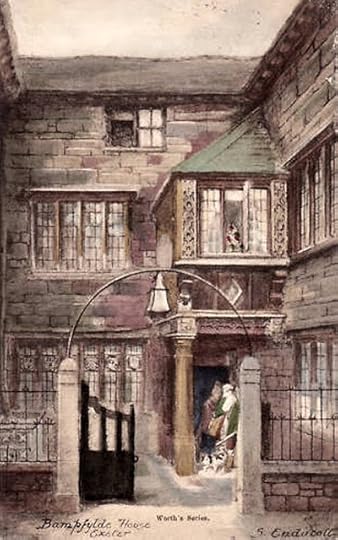 Bampfylde House.
Bampfylde House.In A Divided Inheritance, Elspet Leviston stands to lose her family’s house and lace business to a cousin she never knew existed. It was crucial to me to have a real sense of what Elspet might lose if she failed to keep her family’s house, so the reader can empathise with that. Re-creating the dark, structured interior of the house was also vital as a contrast to what Elspet later finds in Spain when she has to pursue her cousin to hot and dusty Seville.
To recreate the house I researched the late Elizabethan and Early Jacobean style – a period much overlooked, but with its own distinct characteristics.
Elspet lives in London and her house has been in the family for generations, so it is likely that the actual fabric of the building would have been Tudor or even earlier, but with more modern furnishings. She also tells us in the novel that her father is quite reluctant to update the house – to buy new drapes or replace worn items. Westview House in the novel would be quite shabby, but with good quality furniture.
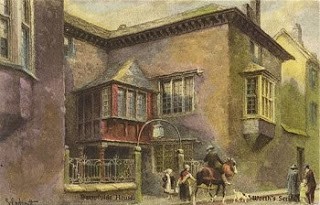 Bampfylde House
Bampfylde House I used a real house as a model for Elspet’s home. I find it much easier to write if I have a good sense of the geography of a house and a real picture of where doors, windows and stairs would have been. I couldn’t find a suitable house in London of the right middling size, though I used the street map of the time to locate where the house would have stood. Much of this area of London was lost in the subsequent Great Fire of 1666, so it took a bit of digging and map-juggling to get the right location.
The house I chose to use as my model is Bampfylde House which is actually in Exeter, in the county Devon. However it was the period and style of a late Elizabethan house of the time, similar to a London merchant’s house. Sadly this building no longer stands, as it was destroyed by incendiary bombs in 1942. Such a catastrophe! But there is a fascinating article about its history here, along with interesting tales of when it was visited by the Duke of Bedford.
The paintings of the house, which are so evocative, were done by Robert Dymond, an antiquarian who visited it when it was still standing, in 1864. The house has a small courtyard at the front, and a larger one behind, which I make good use of in the novel for her cousin Zachary Deane’s sword practice.
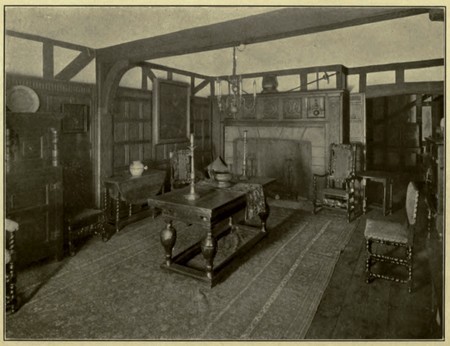 Oak Furniture
Oak FurnitureWithin the house, Jacobean furniture was massive, heavy and built to last. Often from oak, and built on simple lines, it is characterised by ornate carvings, and friezes of decorative designs. The picture above comes from a lovely article from Project Gutenberg which describes ‘a small Jacobean room of elegance and intimacy’. Chairs were made more comfortable with duck-down or feather cushions. Bear in mind, each cushion would have taken several plucked birds, and when cooking, the feathers of the day’s roast would have been saved for this purpose! Wall hangings of leather, damask, and tapestry covered the carved panels that kept the damp from the walls.
 Crewel Work.
Crewel Work.Shutters hung over the mullioned windows to keep in the warmth, along with drapes possibly hand-embroidered with crewel work. Here are some beautiful examples of crewel work designs from the Victoria and Albert museum. Elspet’s mother may have spent long hours embroidering items such as these, and rubbing them with lavender or sandalwood to keep off moths.
 Plasterwork
Plasterwork Ceilings were elaborately plastered, as in the country house Rashleigh Barton shown here – we tend to think of these as being white as they are today, since they have been restored, but in reality these would have been stained with smoke from open fires and from tobacco.
By the way, those interested in Jacobean houses might also find this article of interest – how Apethorpe Hall, a Jacobean treasure, was saved by one man.
 A Divided Inheritance.
A Divided Inheritance. As a former set designer for the stage, I always love to provide a functional realistic setting for my characters. In A Divided Inheritance, I could contrast dark, rainy England with the heat and dust of Seville. At the time Seville is the busiest port in Europe during Spain’s Golden Age, full of new and exciting sights, scents and sounds. There Elspet finds a completely different lifestyle, architecture and customs. Not only that, but she finds a new physical freedom she could never have found in London.
Thank you for reading, and thank you to Mary Anne for hosting me.
Pick up your copy of
A Divided Inheritance
Amazon
Read for FREE on

Connect with Deborah:
Deborah Swift’s website and blogs
More about the Jacobean erahere on the V & A website.
Published on April 04, 2019 23:00
#Bookreview — The King's Mother (Beaufort Chronicles #3) #HistoricalFiction #Tudors @JudithArnopp
Amazon UK • Amazon US
Judith Arnopp
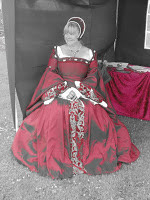 Judith Arnopp is the author of ten historical novels including The Winchester Goose, The Beaufort Chronicle (three book series), The Kiss of the Concubine and A Song of Sixpence. You can find her on Facebook • Twitter • Website • Blog.
Judith Arnopp is the author of ten historical novels including The Winchester Goose, The Beaufort Chronicle (three book series), The Kiss of the Concubine and A Song of Sixpence. You can find her on Facebook • Twitter • Website • Blog.
Published on April 04, 2019 22:00
April 3, 2019
#HistoricalFiction author, Jennifer S. Alderson, is taking a look at the Restitution of Artwork stolen by the Nazis during World War Two. There is also a chance to check out Jennifer's book — The Lover’s Portrait #Giveaway #Art #WWII @JSAauthor
Historical Fiction author, Jennifer S. Alderson, is taking a look at the Restitution of Artwork stolen by the Nazis during World War Two.

Before moving to the Netherlands, I knew very little about the restitution of artwork stolen by the Nazis during World War Two – a topic that plays a central role in my novel, The Lover’s Portrait: An Art Mystery. Only after I began to study art history in Amsterdam did I understand the complexities involved – for both the claimant and the cultural organization or government tasked with caring for the artwork until the legal owner is found.
The ‘Monuments Men’
As an art history buff, I was quite familiar with stories about the ‘Monuments Men’ discovering crates of paintings stored in castles, salt mines, and abandoned train carriages. This international group of civilian museum curators, art historians, and other cultural specialists were officially part of the ‘Monuments, Fine Arts and Archives Program’ (MFAA), recruited in 1943 by the Allied Forces to track down and recover hundreds of thousands of artistic and cultural treasures stolen from art collectors, cultural institutions, businesses and individuals all over Europe.

These precious objects – sculptures, paintings, furniture, religious relics and artifacts – were brought to a series of collection points, where the ‘Monuments Men’ attempted to determine which country their former owners hailed from. In rare cases, documents had been crated up with the artwork which clearly identified its last legal owner. However, the artwork’s destination was most often based on a ‘best guess’ by the plethora of well-educated and well-meaning MFAA experts.
Dutch Artistic Treasures Returned from Germany
But what happened after the artwork was returned to their suspected country of origin – in this case the Netherlands?
Try to imagine it’s October 1945 and you are in Amsterdam, capitol of the Netherlands. Five months earlier, the city was freed from five long years of Nazi occupation. Hundreds of thousands of locals are missing or dead. Many homes are empty shells; anything of value – from furniture to floorboards – has been torn out by desperate looters, leaving rat-infested ruins behind.
The trams haven’t run in four years, not since the Nazis banned public transportation. And even if they were able to, any wood used to hold the rails in place had been torn up and burned for heating and cooking long ago. Oil and gas are non-existent. Food has been rationed for years and most daily household products are simply unavailable. Many government offices have been closed for months, due to a lack of sufficient personnel and the resources to keep the lights on.
And then, from the far reaches of Europe, a plane full of precious artwork and artifacts lands at Schiphol airport on the morning of 8 October 1945. Days later, truckloads of irreplaceable paintings, sculptures, religious icons and relics begin arriving at the Rijksmuseum, delivered into the chaos that was once the lively, well-organized city of Amsterdam.
Despite all the hardships, the Dutch government organized the first exhibition of looted artwork, entitled Dutch Artistic Treasures Returned from Germany, in the spring of 1946, in the hopes of reuniting these pieces with their legal owners. In 1950, the Rijksmuseum organized a second, heavily publicized exhibition of the remaining unclaimed artwork.
 The Rijksmuseum visible from the Museumplein.
The Rijksmuseum visible from the Museumplein.In order to claim their property, claimants had to provide definitive proof of ownership in the form of a title transfer, purchase agreement, or similar document. Considering the exorbitantvalue of many of these works of art – paintings by Rembrandt, Picasso, Matisse, Van Gogh, Frans Hals, and the like – the Dutch government wasn’t making an unreasonable request.
Thankfully, many claimants had taken their important paperwork with them when they fled the country or went into hiding. They were the lucky ones.
Too many of those attempting to claim their property had literally lost everything during the war. They were sent to concentration camps, their homes stripped clean and sold off, belongings stolen, clothes burned, and loved ones murdered. They had absolutely nothing and no one left. How could they fulfill the government’s seemingly simple requirement? They could not and their artwork remained in the care of the Dutch government.
Restitution of Stolen Artwork influenced by Swiss Bank Scandal
Fast forward to the year 1995. The world was shocked to discover that several Swiss banks knew they held dormant Jewish WWII bank accounts, yet refused to return the money to the surviving relatives because the claimants couldn’t supply the bank with a death certificate. Those murdered in German concentration camps never received one, leaving the families powerless. Only after the World Jewish Congress took up the case on behalf of several Jewish organizations, did the banks finally agreed to return money owed to the account holders’ relatives.
Suddenly no institution – cultural or otherwise – wanted to risk being stigmatized as profiting from the atrocities of the Second World War.
Archival Research and Digital Collections
Dutch museums and cultural institutions – as most of those across Europe – began actively searching through their collections, earmarking any pieces which might have been stolen from their rightful owners by the Nazis. Teams of researchers began the tedious process of reconstructing the provenance of artworks and objects, often searching through archives and libraries all over Europe to trace the paths these pieces had taken in their lifetimes.
Simultaneously, museums were beginning to digitalize their collections, for the first time allowing the public access to all of their objects, including the majority hidden in their vast depots. Thanks to this influx of new information, heirs were able to hire private investigators or conduct their own research into these digitalized collection databases.
Strangely enough, Adolf Hitler’s policies have aided the restitution process. Because Hitler considered Germans and Dutch citizens to share a common linguistic and cultural heritage, his troops weren’t officially allowed to seize art or cultural objects from Dutch citizens – as they were given free rein to do in other countries. Here they had to ‘purchase’ the artwork – often from owners placed under duress or blackmailed into doing so – and create official purchase contracts for the transactions. The title transfers and purchase agreements created by these Germans became important resources for both Dutch researchers and the heirs of the unclaimed artwork.
In most cases, the art and the rightful owners were reunited and both the museum and family found peace. In exceptional cases, two or more parties submitted seemingly legitimate claims on the same object or collection. These rare stories inspired the plot of my art mystery, The Lover’s Portrait.
These more complex claims are the ones which garner the most media attention. Stories passed down from one generation to the next, fading photographs and old letters with vague references to the painting in question are all brought into play – argued over and re-interpreted by numerous museum personnel, documentation experts, and art historians before judgement is finally reached – always leaving one party certain justice has not been served and vowing to fight the claim to the bitter end.
 The home of Jewish art dealer, Jacques Goudstikker. He died in a tragic accident while fleeing the Netherlands and his prestigious collection was confiscated by the Nazis. The resulting restitution cases made the international news.
The home of Jewish art dealer, Jacques Goudstikker. He died in a tragic accident while fleeing the Netherlands and his prestigious collection was confiscated by the Nazis. The resulting restitution cases made the international news.Giveaway
Jennifer S. Alderson is giving away a cloth bag from the Anne Frank House, a bookmark featuring canal houses in Amsterdam, and a lovely card.

All you need to do is answer this question:
Who is your favourite artist?
Leave your answer in the comments at the bottom of this post.
Giveaway Rules
• Leave your answer in the comments at the bottom of this post.• Giveaway ends at 11:59pm BST on April 16th 2019.• You must be 18 or older to enter.• Giveaway is only open to residents of the Internationally.• Only one entry per household.• All giveaway entrants agree to be honest and not cheat the systems; any suspect of fraud is decided upon by blog/site owner and the sponsor, and entrants may be disqualified at our discretion.• Winners will be announced in the comments. • Winners have 48 hours to claim prize or new winner is chosen.
The Lover’s Portrait: An Art Mystery

A portrait holds the key to recovering a cache of looted artwork, secreted away during World War II, in this captivating historical art thriller set in the 1940s and present-day Amsterdam.
When a Dutch art dealer hides the stock from his gallery – rather than turn it over to his Nazi blackmailer – he pays with his life, leaving a treasure trove of modern masterpieces buried somewhere in Amsterdam, presumably lost forever. That is, until American art history student Zelda Richardson sticks her nose in.
After studying for a year in the Netherlands, Zelda scores an internship at the prestigious Amsterdam Museum, where she works on an exhibition of paintings and sculptures once stolen by the Nazis, lying unclaimed in Dutch museum depots almost seventy years later.
When two women claim the same portrait of a young girl entitled Irises, Zelda is tasked with investigating the painting’s history and soon finds evidence that one of the two women must be lying about her past. Before she can figure out which one and why, Zelda learns about the Dutch art dealer’s concealed collection. And that Irises is the key to finding it.
Her discoveries make her a target of someone willing to steal – and even kill – to find the missing paintings. As the list of suspects grows, Zelda realizes she has to track down the lost collection and unmask a killer if she wants to survive.
The Lover’s Portrait is available as audiobook, paperback, eBook:
Amazon • Audible • Barnes & Noble • iTunes.
Read for FREE on

Jennifer S. Alderson
 Jennifer S. Alderson was born in San Francisco, raised in Seattle, and currently lives in Amsterdam. Before settling in the Netherlands, she traveled extensively around Asia, Oceania, Australia, and Central America. Her love of travel, art, and culture inspires her award-winning mystery series, the Adventures of Zelda Richardson. Her background in journalism, multimedia development, and art history enriches her novels. When not writing, she can be found in a museum, biking around Amsterdam, or enjoying a coffee along the canal while planning her next research trip.
Jennifer S. Alderson was born in San Francisco, raised in Seattle, and currently lives in Amsterdam. Before settling in the Netherlands, she traveled extensively around Asia, Oceania, Australia, and Central America. Her love of travel, art, and culture inspires her award-winning mystery series, the Adventures of Zelda Richardson. Her background in journalism, multimedia development, and art history enriches her novels. When not writing, she can be found in a museum, biking around Amsterdam, or enjoying a coffee along the canal while planning her next research trip.Connect with Jennifer: Website • Facebook • Goodreads• Twitter.
References:rorimer_at_neuschwanstein.jpg : MFAA Officer James Rorimer supervises U.S. soldiers recovering looted paintings from Neuschwanstein Castle (Photo credit: NARA / Public Domain)https://whitecubediaries.files.wordpress.com/2013/12/rorimer_at_neuschwanstein.jpg
The Rijksmuseum visible from the Museumplein. (Author's photo)
The Lover’s Portrait in Amsterdam. (Author's photo).
The home of Jewish art dealer, Jacques Goudstikker. He died in a tragic accident while fleeing the Netherlands and his prestigious collection was confiscated by the Nazis. The resulting restitution cases made the international news.
<!-- /* Font Definitions */ @font-face {font-family:"Cambria Math"; panose-1:2 4 5 3 5 4 6 3 2 4; mso-font-charset:0; mso-generic-font-family:roman; mso-font-pitch:variable; mso-font-signature:-536870145 1107305727 0 0 415 0;} @font-face {font-family:Calibri; panose-1:2 15 5 2 2 2 4 3 2 4; mso-font-charset:0; mso-generic-font-family:swiss; mso-font-pitch:variable; mso-font-signature:-536870145 1073786111 1 0 415 0;} /* Style Definitions */ p.MsoNormal, li.MsoNormal, div.MsoNormal {mso-style-unhide:no; mso-style-qformat:yes; mso-style-parent:""; margin:0cm; margin-bottom:.0001pt; mso-pagination:widow-orphan; font-size:12.0pt; font-family:"Calibri",sans-serif; mso-ascii-font-family:Calibri; mso-ascii-theme-font:minor-latin; mso-fareast-font-family:Calibri; mso-fareast-theme-font:minor-latin; mso-hansi-font-family:Calibri; mso-hansi-theme-font:minor-latin; mso-bidi-font-family:"Times New Roman"; mso-bidi-theme-font:minor-bidi;} .MsoChpDefault {mso-style-type:export-only; mso-default-props:yes; font-family:"Calibri",sans-serif; mso-ascii-font-family:Calibri; mso-ascii-theme-font:minor-latin; mso-fareast-font-family:Calibri; mso-fareast-theme-font:minor-latin; mso-hansi-font-family:Calibri; mso-hansi-theme-font:minor-latin; mso-bidi-font-family:"Times New Roman"; mso-bidi-theme-font:minor-bidi;} @page WordSection1 {size:612.0pt 792.0pt; margin:72.0pt 72.0pt 72.0pt 72.0pt; mso-header-margin:36.0pt; mso-footer-margin:36.0pt; mso-paper-source:0;} div.WordSection1 {page:WordSection1;} </style>
Published on April 03, 2019 23:00
The Coffee Pot Book Club
The Coffee Pot Book Club (formally Myths, Legends, Books, and Coffee Pots) was founded in 2015. Our goal was to create a platform that would help Historical Fiction, Historical Romance and Historical
The Coffee Pot Book Club (formally Myths, Legends, Books, and Coffee Pots) was founded in 2015. Our goal was to create a platform that would help Historical Fiction, Historical Romance and Historical Fantasy authors promote their books and find that sometimes elusive audience. The Coffee Pot Book Club soon became the place for readers to meet new authors (both traditionally published and independently) and discover their fabulous books.
...more
...more
- Mary Anne Yarde's profile
- 159 followers



